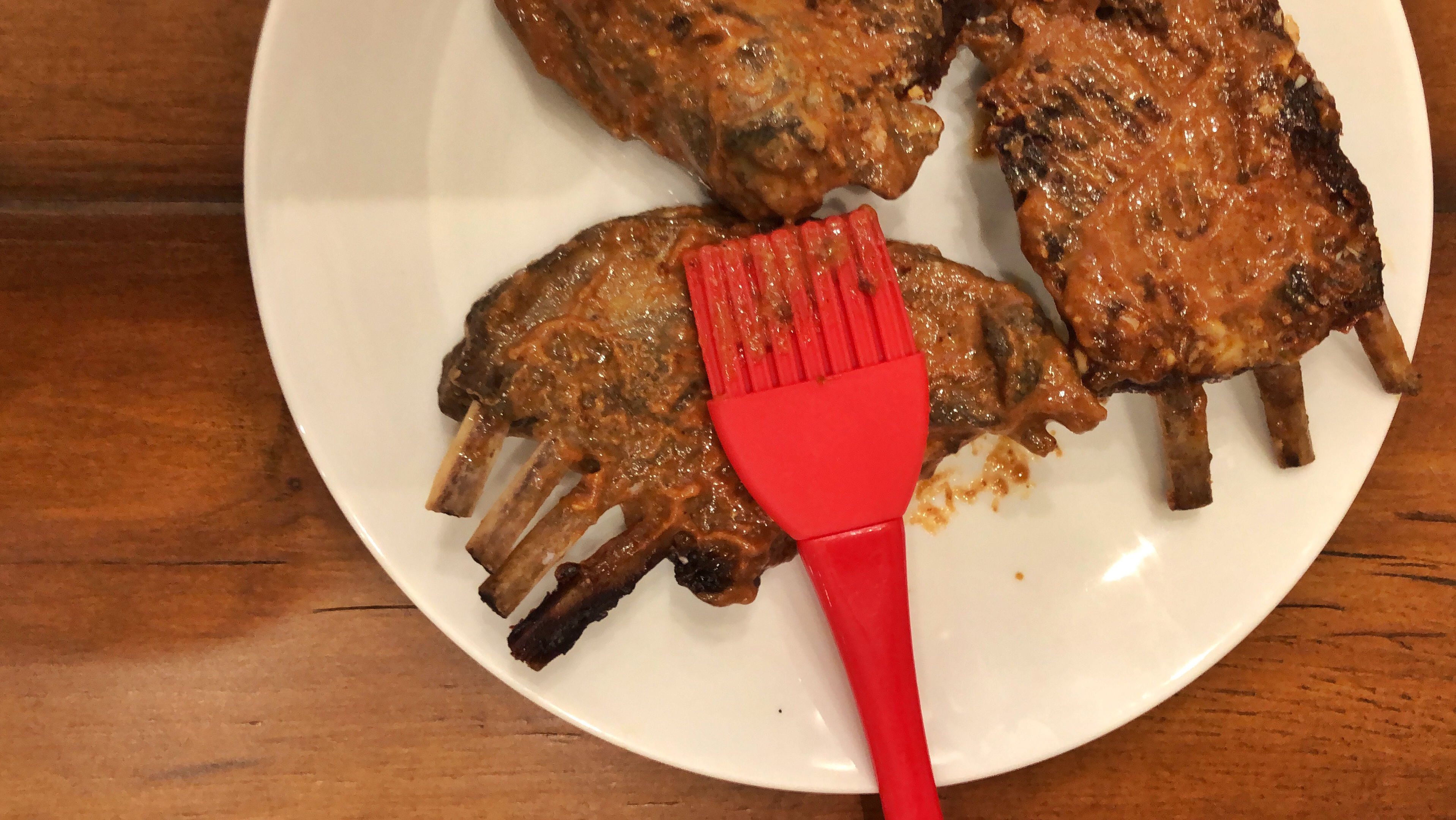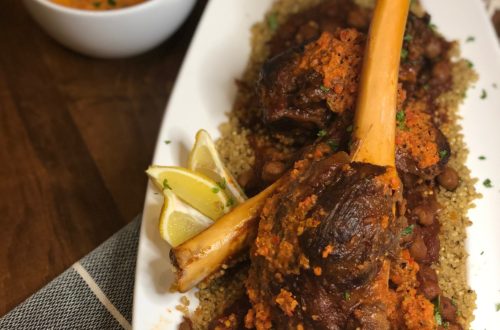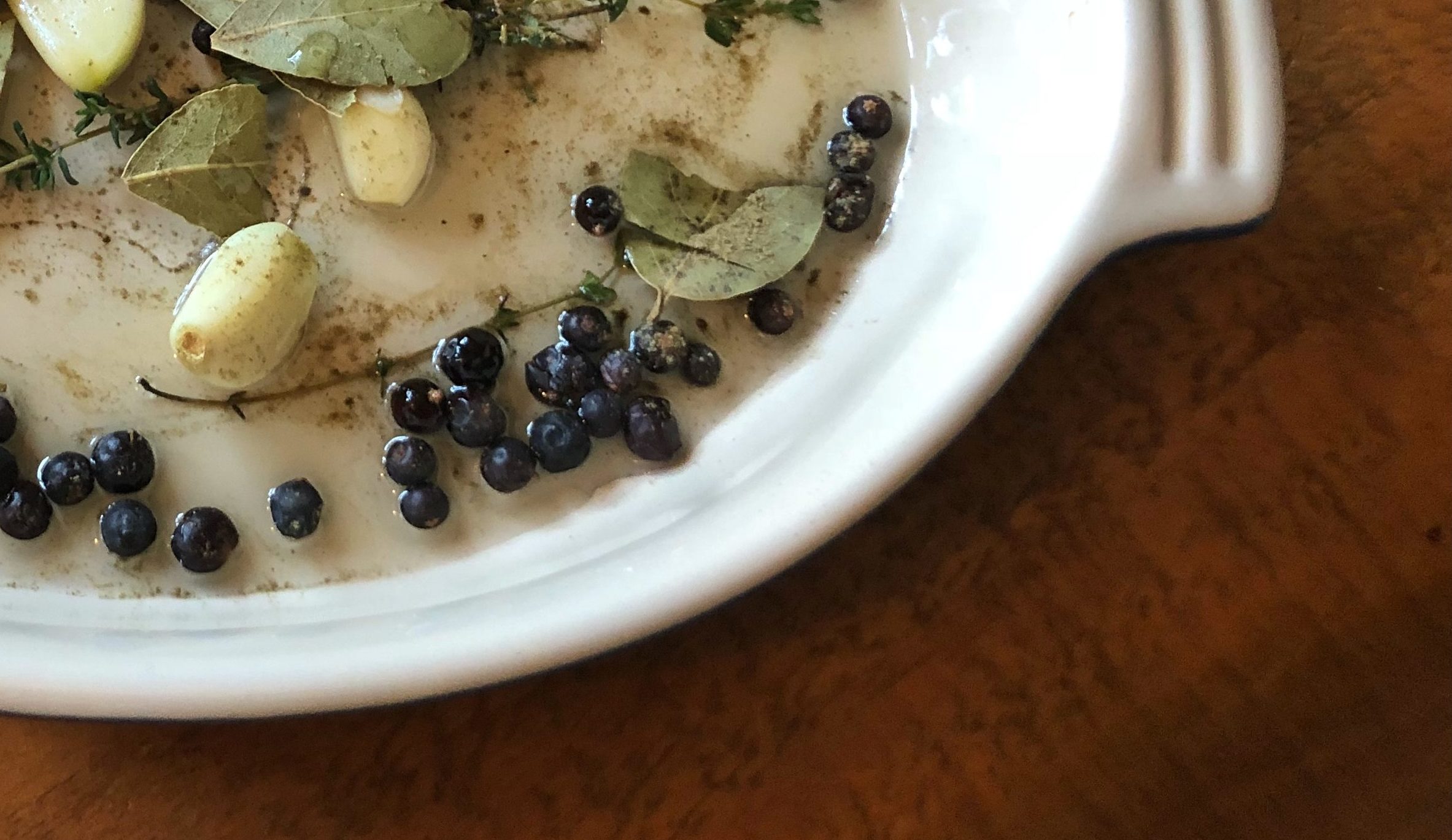
Eye of Round: From Ordinary to Extraordinary
One of my favorite cuts inside a venison hind quarter is a piece of muscle called the Eye of Round.
Situated between the top and bottom round, this tubular cut of meat is often referred to as the “hidden tenderloin” and when prepared properly, it makes a great substitute for backstrap or inner loin.

The Eye of Round is a versatile cut that can be used in everything from stews to old school Italian charcuterie, but I chose to cut this set into medallions, hit them with a juniper-heavy marinade for about 24 hour, hard sear them in cast iron, then finish them on my Traeger pellet grill. When paired with a blueberry compote and a pear puree, then drizzled with a red wine-juniper sauce, these ordinary Eye of Rounds—cuts that are often cubed up and tossed into a grinder—become a thing of beauty with flavors that conjure up images of the very woods where your deer, moose or elk lived out its free-range, organic life.
There are a quite a few steps to this process, which I adapted from recipe I found in Micheal White’s Classico e Moderno, but when spaced out over the course of a few days, it ‘s manageable. Here’s how you can do it at home.
Step 1. Marinate the meat.

Ingredients:
2 venison eye of rounds
1 tablespoon whole juniper berries
4 cloves garlic, peeled and diced
2 thyme sprigs
5 bay leaves
2 sage leaves
1/2 cup olive oil
freshly ground black pepper
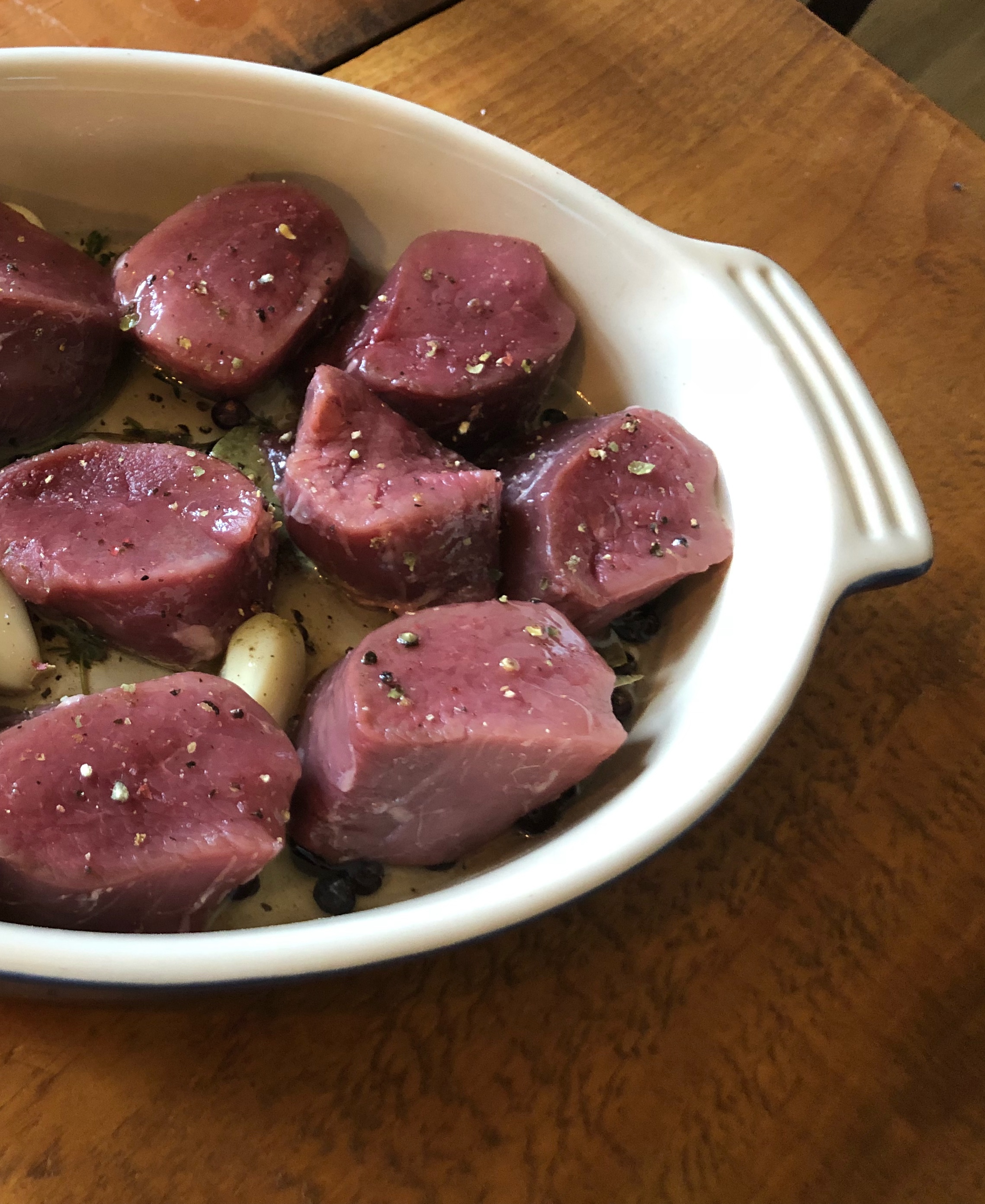
The juniper berries are the star of this marinade as well as the sauce that you’ll make a bit later in the process. They are often used to offset the “gaminess” some people associate with venison. I personally love the flavor of venison in even its most rudimentary form and have never perceived any off flavors unless the meat was poorly butchered or not properly cared for in the field, but juniper is a great accompaniment to venison regardless.
For this marinade, just add half of your oil into a baking dish or other type of flat, sealable container. Then the juniper berries—which you’ll want to bruise frist with the side of your chef’s knife—along with the garlic, thyme, bay leaves and sage. Lay your medallions over the top of the marinade, drizzle on the remainder of your oil and season the meat with fresh cracked black pepper.
Cover the meat and marinade mixture in plastic wrap and set it aside in the fridge for about two hours, after which you’ll want to pull them out and flip them. Then return to the fridge overnight or for up to 24 hours.
Step 2. Make the blueberry compote.

Ingredients:
8 oz blueberries
1 cup dry red wine
1 cinnamon stick
2 tablespoons sugar
1 bay leaf
I used blueberries for this compote primarily because that’s all I had on hand. If I’d had my druthers, I would have used some type of wild berry such as wild blueberry or huckleberry. But the supermarket berries worked just fine in a pinch. Prunes could also be used and will offer a more subdued and subtle sweetness to the finished dish than the blueberries.
To make it, put the wine, cinnamon stick, sugar and bay leaf in a sauce pan over medium heat. Bring the mix to a simmer and stir continually until the sugar is dissolved. Continue to cook until the liquid is reduced by about 25 percent. This should take roughly four minutes.
Add the blueberries and let them simmer for another five minutes or so, then pull the pan from the stove top and set it aside for 1 hour to steep. After it steeps for an hour, break up the berries with a wooden utensil, drain off most of the liquid, remove the bay leaf and cinnamon stick, and set the finished compote aside. It will store in an airtight container in your fridge for up to 24 hours.
Step 3. Make the pear puree.

I used pears for this puree and it came out great. You could also use quince if you can get your hands on it. Like juniper, quince is often utilized in Italian cooking to “offset gaminess”.
Ingredients:
1 cup water
1 cup dry white wine
1/4 cup sugar
1 bay leaf
2 pears, peeled, cored and diced
2 tablespoons unsalted butter
Add wine, water, sugar and bay a leaf to saucepan over medium high heat. Bring the mixture to a boil and add the diced pears. Continue to boil until the pears a tender enough to smash with a fork. Remove the bay leaf and drain the diced pears in a colander or sieve. Place the cooked pears into a food processor along with your unsalted butter and the pulse the mixture until you’ve got a fine puree. Set aside in an airtight container in the refrigerator. Like the compote, the puree will keep for up to 24 hours.
Step 4. Make the sauce.
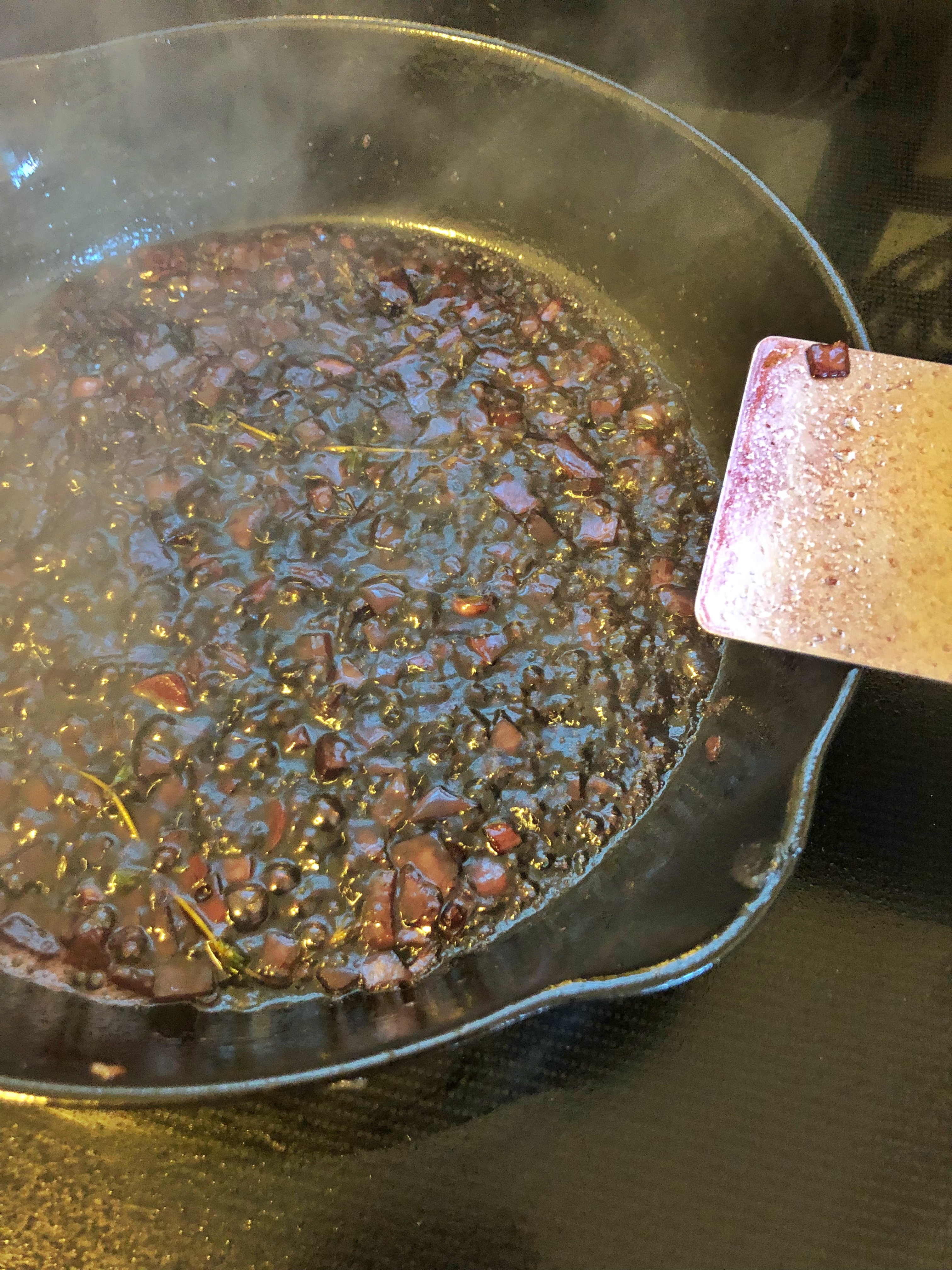
Ingredients:
4 tablespoons unsalted butter
4 shallots
1 minced clove of garlic
1 thyme sprig
1 bay leaf
1 cup coarsely chopped morel mushrooms (optional)
2 cups dry red wine
2 cups venison stock
1 tablespoon whole juniper berries
1 teaspoon cocoa powder
kosher salt
fresh ground pepper
A good red wine sauce is something that every competent home cook should have in his or her arsenal. This version incorporates juniper berries and cocoa powder. Think of it as the backbone that holds the integrity of this entire dish together.
Start off by adding 2 tablespoons of your butter to a saucepan over medium high heat. Melt the butter. Once it starts to foam, add in your shallots and garlic and cook until tender, stirring occasionally. When tender, add your herbs (thyme and bay leaf) and the chopped morel mushrooms if you’re lucky enough to have them.
Cook for three of four more minutes and then pour in your wine, using a wooden spoon to stir and scrape any flavorful frond that has adhered to the bottom of the pan while cooking. Continue to cook the wine on medium-high heat until the liquid has almost completely evaporated. This can take 10-12 minutes.
Now you can add that venison stock you made after your last deer harvest, or, as I call it, liquid gold. I actually took this a step further by throwing in a frozen cube of venison glace de viande, which is essentially an intensely flavorful stock that has been reduced down to a gelatin like consistency. There’s a great recipe for it in Hanks Shaw’s Buck, Buck, Moose.
Note: if you go this route, you’ll want to adjust the amount of venison stock you use accordingly. I think that one cup stock and 1 standard ice cube tray-sized cube of glace de viande, along with a half cup water for good measure, is a safe bet.
Once your stock is in, continue to cook your sauce over medium-high heat until it is recuded by about 50 percent. This will take roughly another eight to ten minutes.
When you’ve achieved the consistency you’re after— I like my sauce to be able to coat a metal spoon—strain the whole thing through a fine mesh sieve to remove all solids. Then add it back to the sauce pan, whisk in the juniper berries and cocoa powder, cover the pan with a lid and set it aside, preferably on a back burner over super low heat.
Step 5. Sear the medallions.
By this point, you will want to have your venison medallions out of the fridge, resting at room temperature. Season them with salt and another round of fresh cracked black pepper and sear them on the oiled cooking surface of a cast iron skillet that has already achieved a level of high heat. Put a good quick sear on both sides and along the edges as well. I would recommend doing them one at a time so you can pay close attention and be careful not to over-sear. At the most, sear them in batches of two or three.
Step 6. Finish on pellet grill or in a 450 degree oven.

This step does not require a pellet grill, but I never miss an opportunity to fire up my Traeger. I set the temp regulator to high, which tops out at about 450, and carefully monitored the internal temperature of the medallions. The second they reached 130 F, I pulled them off and tented them in foil. Obviously, the same process can be duplicated in a standard oven.
Step 7. Plate and serve.
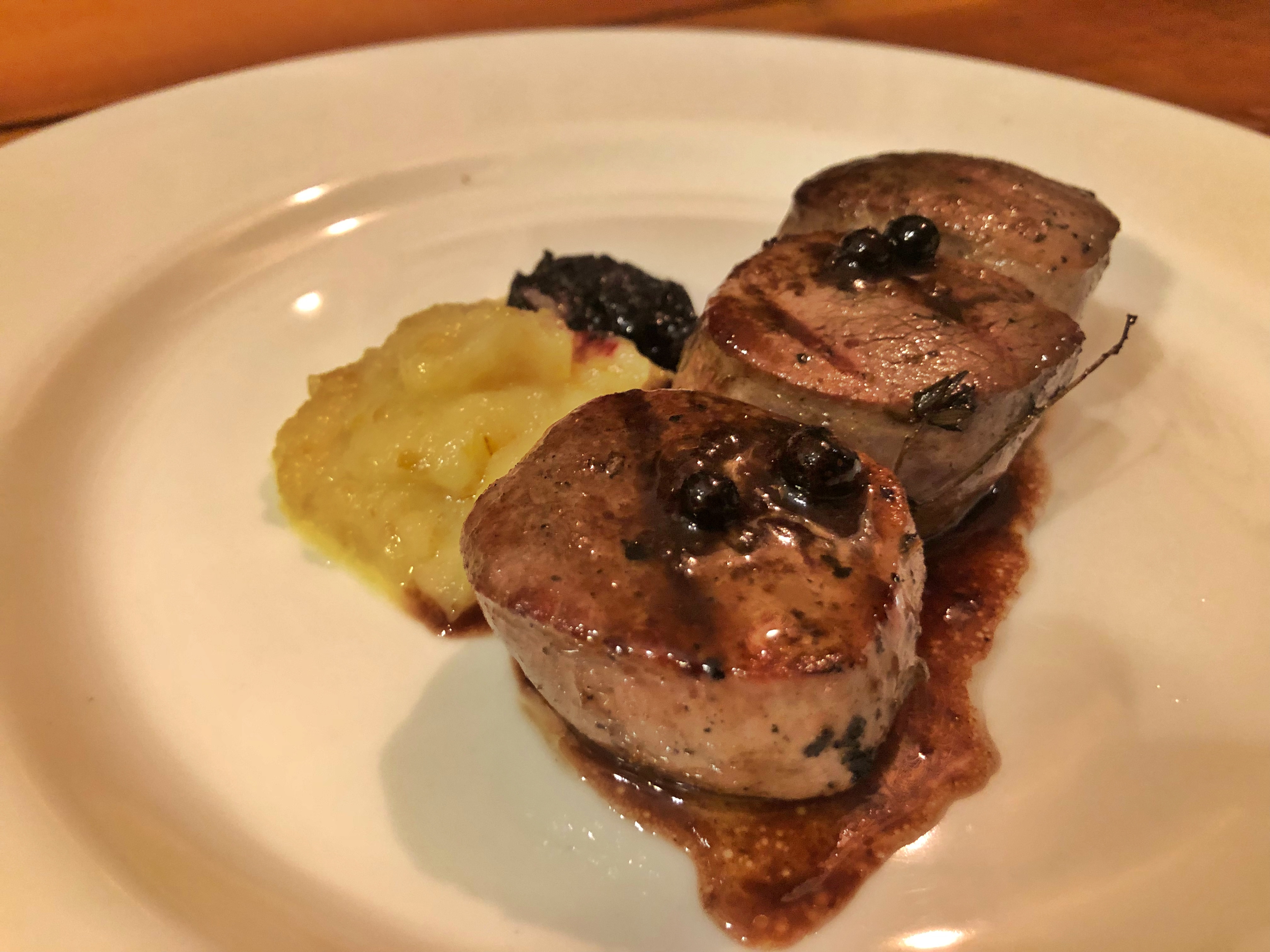
Now it’s time for the most satisfying step of the whole process. Line those beauties up on the plate, spoon on some of your compote and your puree and drizzle the whole mess with your red wine-juniper sauce. It tastes just like woods.


